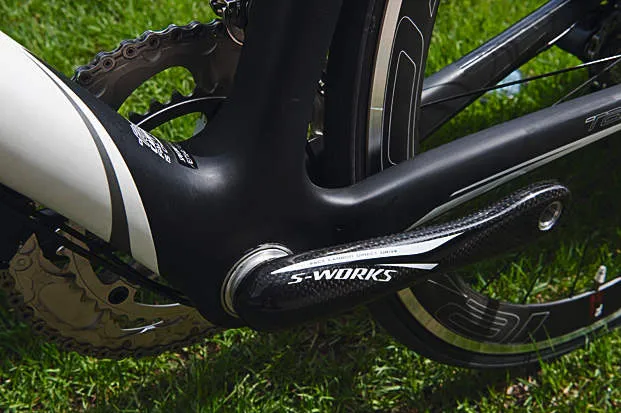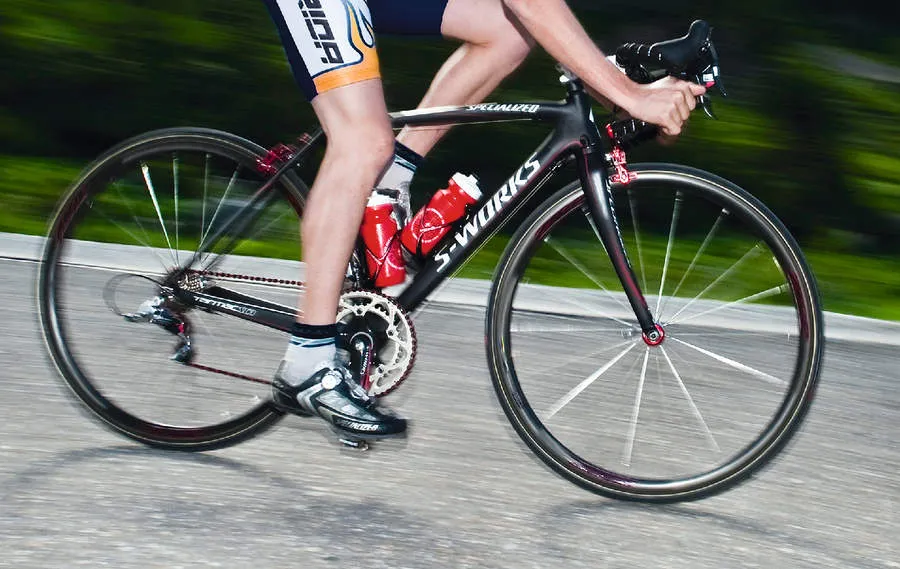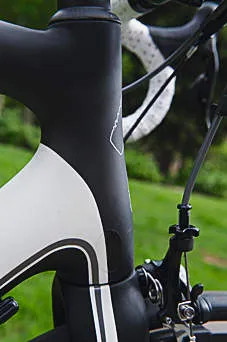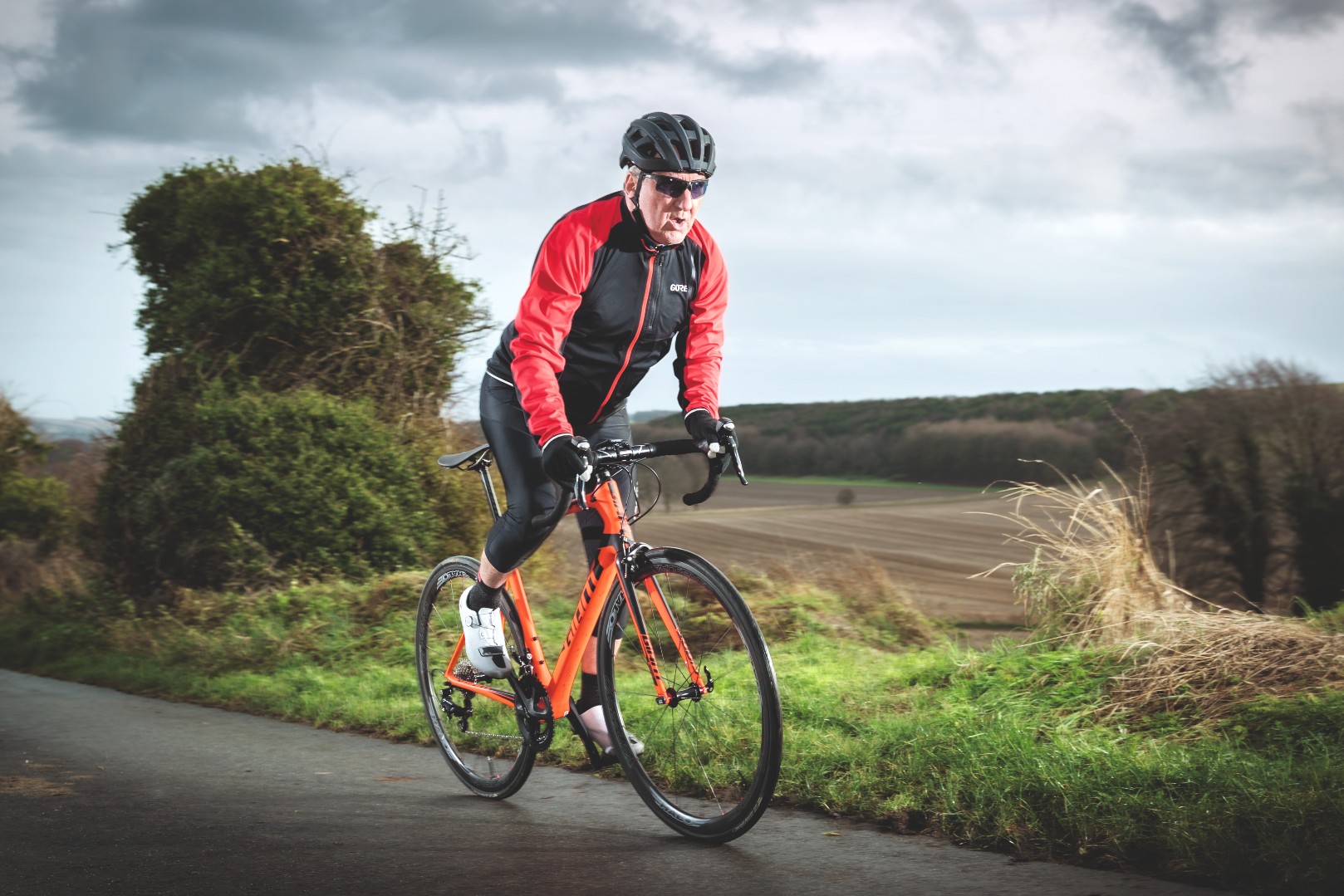There aren’t many sports where the amateurs are allowed to use better kit than the professionals. However, riding Specialized’s new superlight Tarmac SL3 means you’re carrying nearly 2lb less in climbing weight than Team Saxo Bank can. That alone is impressive, but it’s only part of the story with this new flagship ride.
Ride & handling: Performance-oriented machine that loves to climb
We put the SL3 to the test while plummeting down the eight-mile canyon descent from the Snowbird launch venue in Utah and its precision was outstanding. Even riding at more than 50mph through sweeping bends and half-patched frost cracks, we found it stayed remarkably surefooted and pin sharp.
The steering is really well balanced and totally vice free, without a trace of shake even despite a less-than-perfect front tub fit that left a regular hop in the ride. As a result, we soon forgot our fear of the US-spec SL3’s left-hand front braking and started ripping up every descent at full tilt. The Tarmac loved it.
As the inevitable jousting increased in intensity, a back end and oversized crank designed to cope with the torque of Boonen and Cancellara showed no signs of flinching under our chicken drumstick drive either.
In fact the whole bike is a remarkably practical machine, from its solid bars to conventional, adjustable 27.2mm seatpost, which comes in place of a resale-limiting seatmast. It’s something we don’t often find on bikes designed to offend gravity as badly as this one.
As the miles wore on, both the stiffness and performance orientation became increasingly obvious. Despite the curved top tube and rubber bung buzz reducers in the seatpost, the decreased hand sensation and sharp stings from the potholes we couldn’t dodge confirmed we definitely weren’t riding a Roubaix. The aggressive posture and corner-carving geometry certainly aren’t in the orthopaedic Sportive mould either.
Unsurprisingly though, the occasional ‘grin and grind it’ sufferance pays back big time on any road that ends higher than it starts. To be honest, 40-degree heat and 5,000-8,000ft elevation aren’t ever going to flatter your fitness, but the SL3 works wonders with whatever wattage you can wring out.
Even when our cadence was a quarter of our heart rate, it still squirted forward with every footfall. If you’re on tempo and spinning smoothly, you’ll find it surmounts serious climbs with an almost eerie lack of effort.
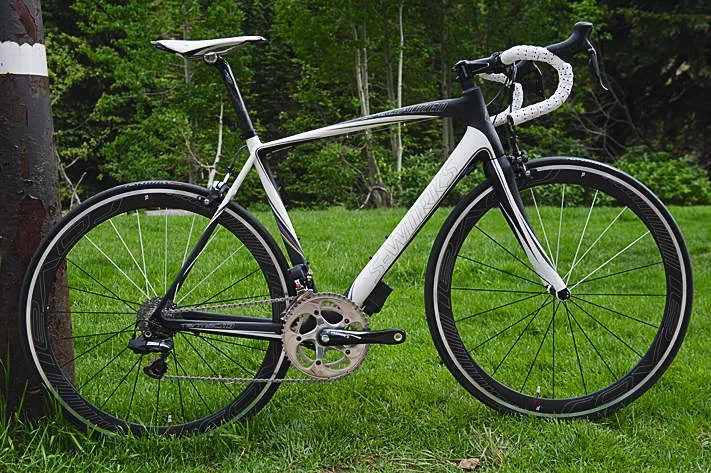
We rode the SRAM Red equipped SL3, but this Dura-Ace Di2 model is available too
Frame: Latest chassis is both lighter and stiffer than predecessor
While it looks similar to the SL2, the SL3 uses a totally different four-piece (head/down/top tube, bottom bracket/chainstays, seat tube and seatstays) construction.
Add to that a press-fit bottom bracket, hollow alloy dropouts and carbon headset cups, and the SL3 ‘module’ – which is comprised of frame, forks, seatpost, headset and cranks – weighs 150g less than its predecessor.
But Specialized are quick to point out that the SL3 isn’t just about minimal mass. The stays are reshaped and increased in size, there are reinforcing ribs in the head tube and bottom bracket, and the bike’s designers have also changed the carbon layup and fibre spec in key areas.
The result is a claimed 18 percent increase in rear end stiffness and reduced front end twist, which is a huge leap forward for a bike that’s also lost weight.
Equipment: Depends where you live – UK riders get the short straw
If you’re wondering why we haven’t mentioned the performance of the kit from TRP, SRAM, Zipp and their ilk, that’s because such information is irrelevant in the UK. While the US gets the smorgasbord-style menu, it’s straight up Dura-Ace and Roval wheels for us Limeys.
That’s not exactly a paupers’ parade, though, and if you want to create a featherweight, the frame, forks, headset and seatpost are available in Quickstep or Saxo Bank colours for a distinctly reasonable £1,899.99.
